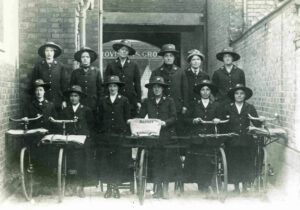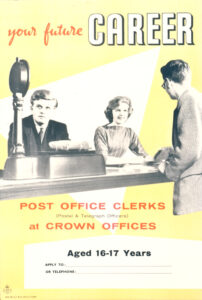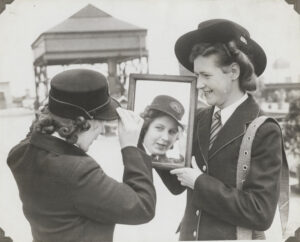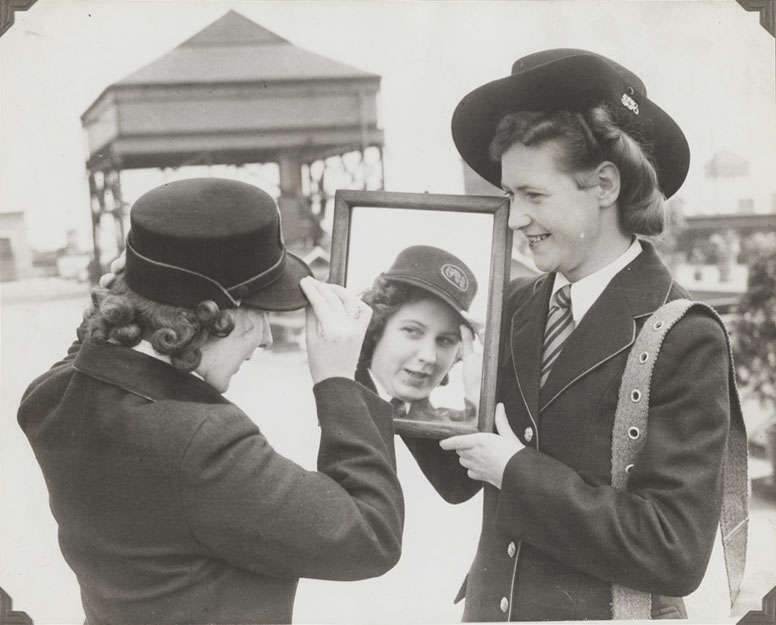#ForgottenFriday – The Women Who Delivered
(History of women who got the mail through in times of war)
By Trish Wade (Former Postie)
Today, in modern times, there is nothing unusual about seeing women and girls delivering the post for the Royal Mail on the same terms as the postmen, in fact there probably isn’t many people around now who can remember a time before it was commonplace to see a post lady on the street. This is a brief history of how the Post Office came to realise the benefit of employing women and girls, especially in times of war and how they also ‘did their bit’.
The Post Office (GPO) first started to employ women in large numbers after it took control of the telegraph system in 1870 and found different roles for a lot of the women who had been telegraphists, such as clerical roles in certain departments such as Post Office Savings Bank and in the Returned Letter Office. Prior to this the women were not allowed to work with the men due to the social proprieties of the time. That said, the women were not allowed to come in and out of the buildings at the same time as the men and had to be escorted. It was only the men who could work night shifts and even late evenings, and the women were certainly paid a lot less than the men. In small Post Offices around the countryside, it was easier for women to work along side men and they would be employed as sorting clerks and telegraphists.
In the late 1800s there was also a marriage bar which meant that any girl who got married had to leave her position, although married women were allowed to continue as Sub-Postmistresses. This arrangement suited some women, as they quite often planned to start a family on marriage, for others they resented the inequality which set them aside from the men.

1914 Post Women – (c) Postal Museum
This marriage bar was eventually, but temporarily, lifted during the outbreaks of World War I and World War II . The GPO employed a great many women, whether single or married, in WWI when they realised this had to be done to maintain the service when large numbers of men had gone off to fight. Women were even allowed to deliver the mail in towns and cities. This newfound work for women ended when the war did. However, after the outbreak of the Second World War, women were once again called to fill the gap left by the men joining the armed forces. A turning point came just before Christmas 1940 when Postmen were asked to persuade their female loved ones, be it wives, girlfriends, sisters etc, to help deliver the Christmas post. The Post Office was looking for 8,000 volunteers in London alone and within hours 4,000 women had stepped up to volunteer.

Recruitment Poster – (c) Postal Museum
Initially regarded as being a temporary measure to help out, the Postmaster General was so impressed the capabilities of the female volunteers that it was decided that they would be retained for further work during the war. By the end of 1941 over 100,000 were working for the Post Office. These resolute women kept the services of the Post Office going right throughout the war years and in all weathers (as they still do to this day). However, yet again, the marriage bar was reinstated after the war finished but in 1946 it was lifted altogether.

Includes garment pattern numbers.
1929-1941 (c) Postal Museum
It was also during WWII that the Union of Post Office Workers started the campaign for equal pay for men and women, which up to then women’s concerns over pay had largely been ignored by the male dominated unions. Equal pay was eventually achieved after years of debate and in 1955 there was started a 6-year phased equal pay scheme for most grades, so it was the 1960s before it eventually happened, and men and women were treated the same.
It might not have been seen as glamourous as joining the WRNS, WAAF or ATS but the Postwomen of Great Britain were proud to don their uniforms and do their bit for the war effort.


